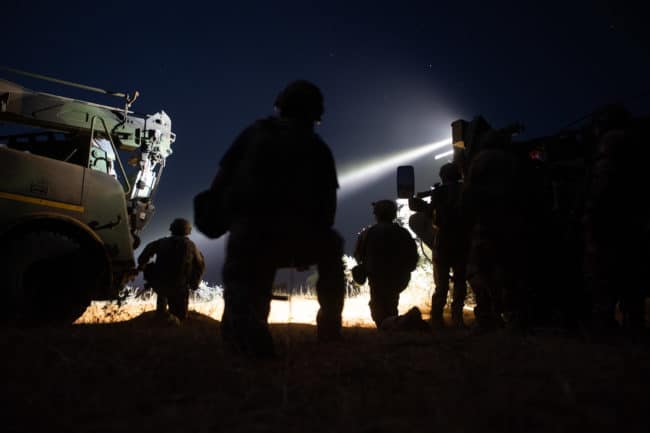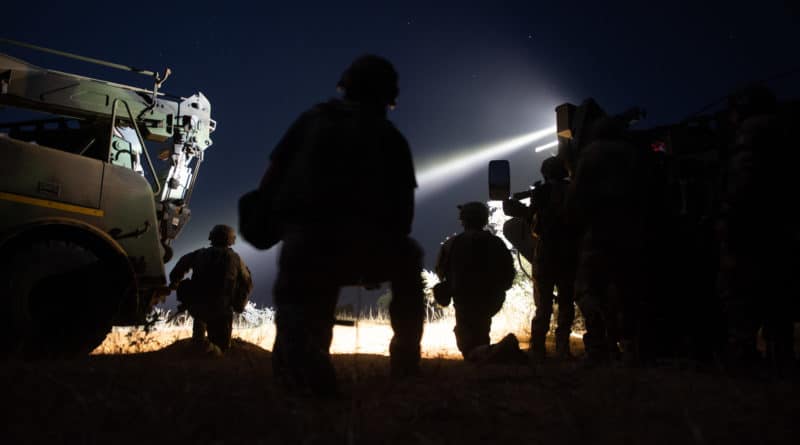The multiple contradictions of Operation Barkhane and the French commitment to the Sahel
(B2) At the dawn of its eighth year of intervention, the French anti-terrorist operation in Mali "Barkhane" seems to be wandering today in a race forward, without strategy or escape.

Operation Barkhane struggles to convince
This is not from today (read: In Mali, the French are not destined to stay... but will they stay anyway?). More than eight years after the start of the French intervention, the same questions arise: What is its framework for intervention? What is the desired final objective of the operation? What is its exit hypothesis? These questions deserve a deeper introspection, than an epidermal reaction, the day after the death of soldiers, under the influence of emotion (1). Especially since the contradictions are numerous.
The victory press releases, regularly announcing the 'neutralization' of jihadists by Barkhane, mask a less encouraging reality. At the start of 2021, rebels and terrorists are still as numerous as in 2013, just as armed and organized. Despite the heavy losses that have been caused to them, they still manage to attract new recruits to them, regularly regenerating from the losses suffered in their ranks. This should appeal.
Even if the situations cannot be compared, we find ourselves in a situation not very different from that of Afghanistan. France occupying the role played by the United States, as a leading force, responsible for eliminating designated adversaries, by force. Without really succeeding in winning the war, just a few battles. This just limits the power of the opponent, without succeeding in defeating him.
From a temporary operation to an operation that takes hold
A counter-destabilization operation
Originally, it was the jihadist advance from the north towards the center of Mali that motivated the French intervention in 2013. The enemy was clearly designated. And the cause put forward: the collapse of the Libyan regime, which released both fighters who returned to the country, with arms and baggage. The objective of the “Serval” operation is to stabilize the area, and to stay there until elections are held. A fairly classic process like the French intervention in Chad in 2008 or in Côte d'Ivoire in 2002-2003 (Unicorn force), within the framework of the defense agreements signed with these countries.
...to a broad-based counter-terrorist operation
In 2014, the strategic objective becomes broader, but also more vague. The mission is transformed into an operation which aims at the military level to fight against terrorist groups, but also to ensure the rise in power of the Malian force, even to support the reconstruction of the Malian State, its return to the North of the country, with an objective of pacifying the area... it is "Barkhane".
From the elimination of the opponent ...
As described by General Marc Conruyt, commander of the Barkhane force, in November 2020, the “road map” appears precise, at first glance: “ neutralize cadres and fighters " and " disrupt the coordination between the katibas which are reinforced by the exchange of men, information, equipment ».
the drying up of the recruitment pool
But it also expands geographically — prevent shifts between Saharan and Sahelian spaces, or even coastal ones "—as operational—" We must also drain the ponds recruitment, defuse the dynamics of exploitation of minorities that fuel terrorism ". We are thus in a counter-insurgency operation.
From a presence of a few months...
In February 2013, barely a few months after the arrival on Malian territory of French troops, the Minister of Foreign Affairs at the time, Laurent Fabius, announced an almost imminent withdrawal: "JI think that from March, if all goes as planned, the number of French troops should decrease. France has no vocation to stay permanently in Mali. It is the Africans and the Malians themselves who must be the guarantors of the security, territorial integrity and sovereignty of this country. ».
... at the necessary time
In early 2018, the Chief of the Defense Staff, François Lecointre, said: “solving the problem in Mali [will take] ten to fifteen years ". France has no not destined to stay forever, but the time necessary for our Sahelian partners and their armies to be able to respond to the threat themselves, which they are beginning to do says Florence Parly in early January 2021, thus confirming that the French presence is taking root.
An operation that expands geographically and in its allies
From the North of Mali...
In 2013, when they arrived in the territory, the French were protecting Bamako and the south of the country against the advance of rebels from the north. The fighting quickly focused on northern Mali, above Gao, between the Adrar des Ifoghas (read: Mali: playing the element of surprise (General Saint-Quentin) and the adrar Tigharghar (read: Violent clash between the Barkhane force and jihadists in northern Mali).
... in central Mali, Niger, Burkina
Today, Barkhane focused on another area, that of "the three borders", straddling Mali, Burkina Faso and Niger, Liptako-Gourma, where armed groups are most present. The center has become the soft underbelly of the country. One can wonder if, once this abscess is fixed (if it can be), if other areas will not be affected.
Of a national operation supported by the Europeans
Operation Barkhane is conducted at the national level, with European support from the start (Denmark, Spain, United Kingdom, etc.), which essentially provide it with logistical support, which is necessary and irreplaceable, just like that of the United States ( in terms of intelligence and air support via drones). But it is not a European operation, nor really a multinational operation.
... to a well-asserted French management
France's partners are willing to support it, but no more. France wants European support, but no more. It intends to keep both the direction of the operation, its rhythm and its modus vivendi. There is no question of transforming it into a European 'EUFOR' type operation — at least for the moment. This is one of the reasons (but not the only one) for the reluctance of several countries (Germany, Netherlands, Belgium, United Kingdom, etc.) to engage further in an operation which remains, above all, French. Europeans are willing to get involved, but prefer to do so within a structured, UN-type, or even bilateral framework (read: How many European soldiers are present in the Sahel? How many are in Barkhane?).
... or even a European operation?
The growing involvement of Europeans, within the Takuba task force, in a combat position and no longer just in logistical support, could change the situation. If the figures given by the general staff of the armies - 2000 Europeans in the long term in Takuba - are realized (which seems quite extraordinary), the current system, of associating Europeans with an operation, would require a transformation.
Lire: How many European soldiers are present in the Sahel? How many are in Barkhane? (v3)
The absence of a way out of the crisis
The Minusma?
The relay to the force of the United Nations, which is the classic of a European intervention, seems abandoned today. MINUSMA serves more as a presence force, a stabilization force, to fulfill a few limited tasks.
The Malian army?
The reconstitution of the Malian army (the FAMa), led in particular by the Europeans of EUTM Mali, like the French of Barkhane, is going its way. But it comes up against several clearly identified obstacles. The actual size of the Malian army is not really known (the number of 'false' soldiers making it possible to supplement the end of the month for certain officers (cf. the report on Arte, Mali: an army in the crosshairs) (2). The training remains short (a few months) and limited. It does not always make it possible to form constituted, autonomous units. Trained soldiers are sometimes scattered across multiple units, as B2 has learned. It is not always well followed. A well-identified defect, which the EUTM Mali mission intends to remedy today in the new mandate put in place (read: EUTM Mali takes over the collar. New bases, outings throughout Mali, integrated Gazelle. Waiting for Burkina and Niger). As soon as they are trained, Malian soldiers are also sent into battle. The losses suffered by the FAMA are numerous.
The G5 Sahel Force
Officially, the objective is to entrust the stabilization of the region to the joint force of the G5 Sahel (armies of Burkina Faso, Mali, Mauritania, Niger, and Chad), created in 2017. But this is struggling to set up. Which is quite logical. On the one hand, Mali has no army worthy of the name capable of neutralizing the terrorist mob in the region. Moreover, to federate such different states, facing different threats, in a common force is quite daring – the Europeans themselves have never succeeded in setting up such a force. Moreover, giving more power to the military in coup-prone areas – as the recent example of Mali in August 2020 demonstrates – is feared by civilians, who lack confidence in the state apparatus as a military.
Questions arise
The local dimension underestimated?
In these official explanations come only rarely, the endogenous spring of these groups. Qualifications and attachments to the two major movements of international terrorism—the Islamic State and Al-Qaeda—appear to be shifting. Calling all these armed groups jihadists imported from other lands may not be so accurate. These are above all local groups, often led by former soldiers of the Malian Armed Forces (FAMa), groups that use various weapons: from planting IEDs, improvised explosive devices, to attacks on Malian camps, everything without forgetting a certain staging that accompanies any military campaign (see also: The jihadists are not guys in tap dancing, they think (Wassim Nasr).
Groups that manage to constantly regenerate?
In 2013, at the time of the first fighting, the forces of the armed groups are estimated at less than 2000 men). Of this number, a good half is neutralized. In the battle of the Adrar des Ifoghas alone, there is talk of several hundred deaths among the armed groups. In 2019, the "armed terrorist groups" would still include 2000 combatants in the Sahel, including 1000 to 1400 in Mali, indicates theAFP on faith a "French military source". The figure of a hundred enemies eliminated per month on average was announced in March 2020. But during a hearing before the National Assembly, General Lecointre mentioned the figure of around 1500 opponents, nothing in the Liptako region between Mali and Niger, and from 2000 to 2500 in total. This means that despite many losses, terrorist groups manage to regenerate their numbers.
To negotiate or not to negotiate?
The official axiom: 'there will be no military solution, only a political solution' is immediately contradicted by another axiom 'we do not negotiate with terrorists'. However, everyone knows that the stable exit from the crisis will not rely on a G5 Sahel force or even a reconstituted Malian army. But not a negotiation with the various rebel groups. The triptych 'demobilization, disarmament, reintegration' (DDR) - tried many times in Mali, without really success, will not be started by repeated military operations.
(Nicolas Gros-Verheyde and Aurélie Pugnet)
- Lire: New attack against a vehicle of Operation Barkhane near Menaka in Mali (v2) et Three Barkhane soldiers die in an IED
- This loss of international aid is a recurring question: is there not too much money being poured out, going into different pockets, but not for the main use.

